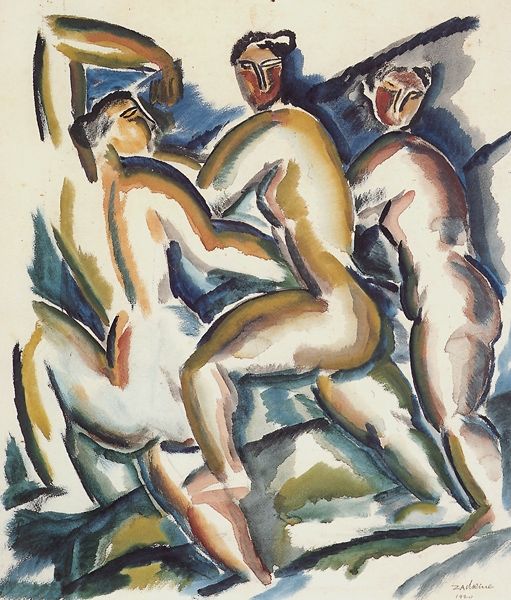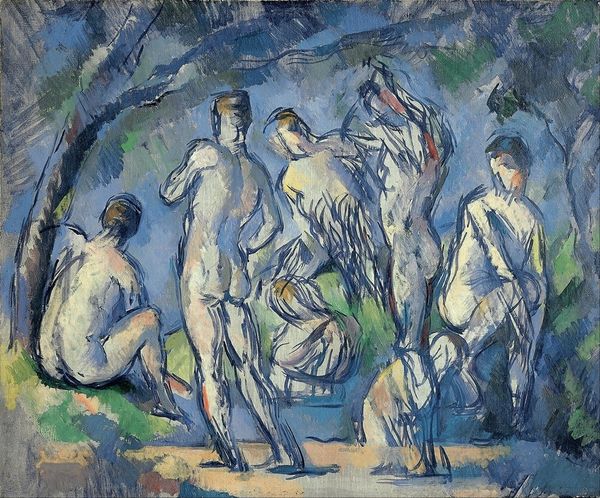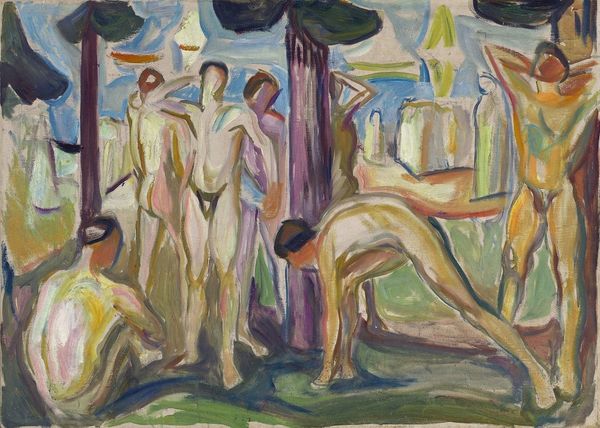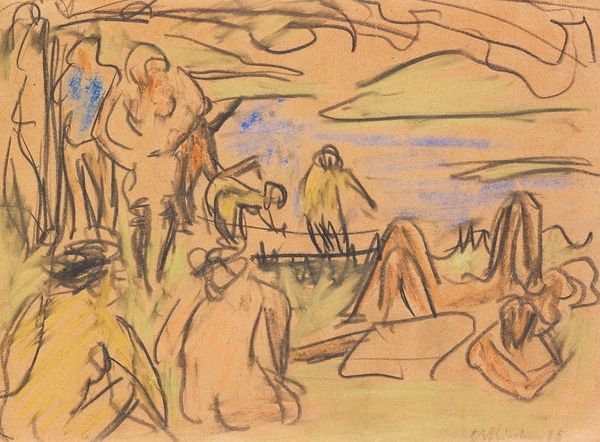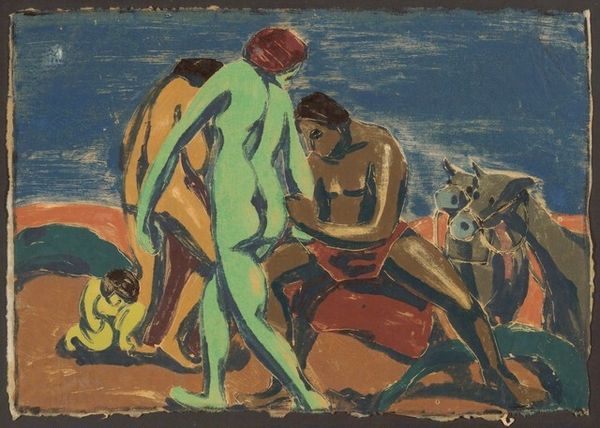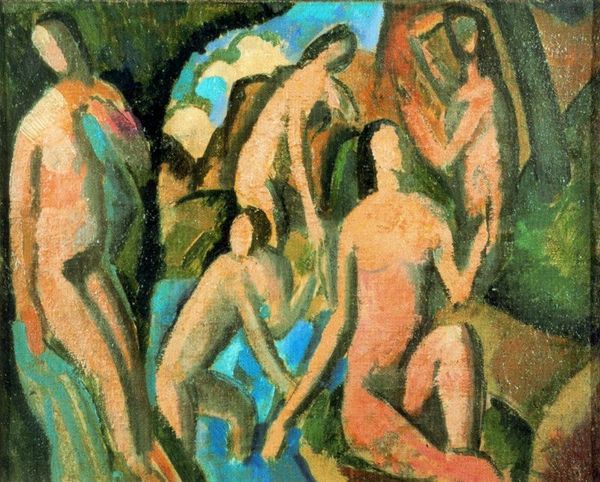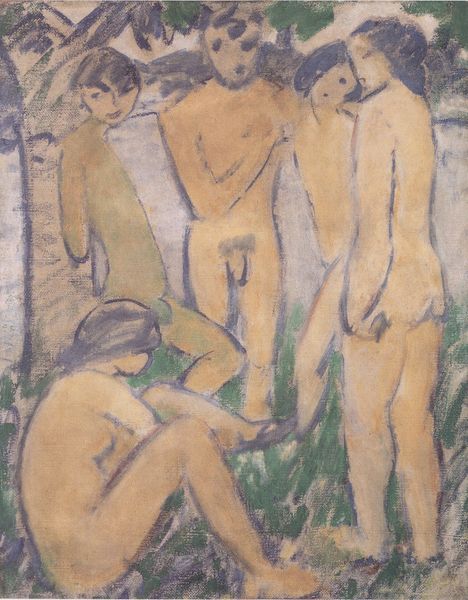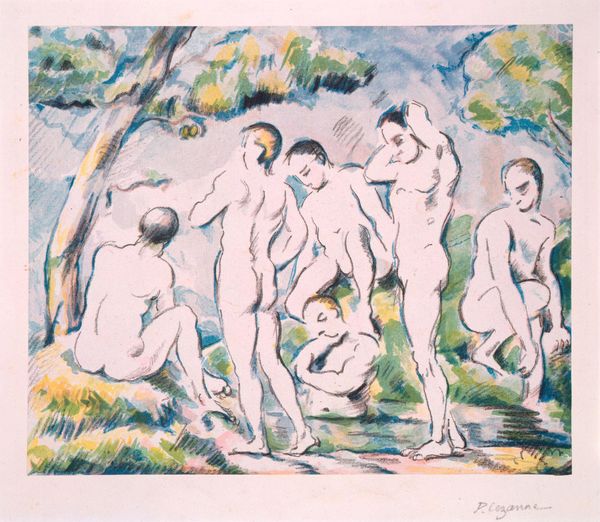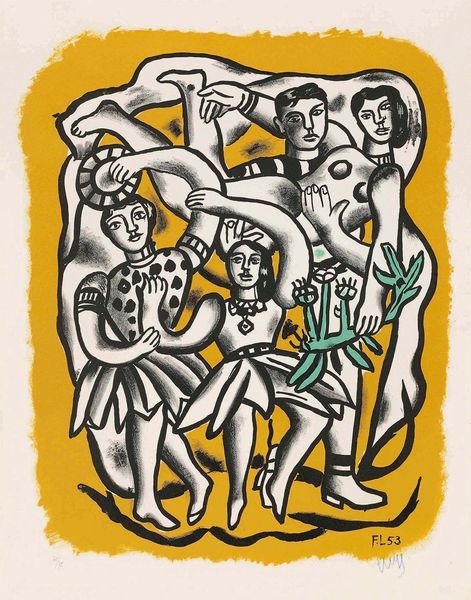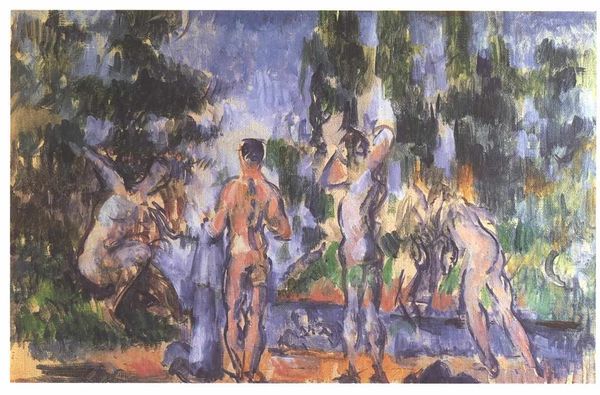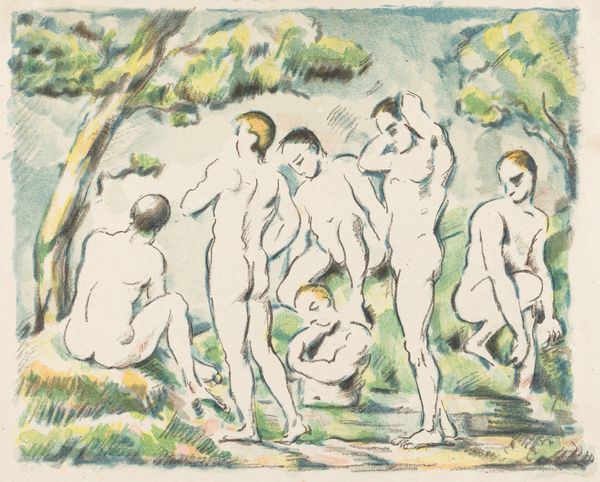
watercolor
#
landscape
#
figuration
#
oil painting
#
watercolor
#
expressionism
#
nude
#
watercolor
Copyright: Public domain US
Editor: Here we have Ossip Zadkine’s “Landscape and Bathers” from 1919, created with watercolor. It’s… striking, isn’t it? Almost unsettling. The figures seem very blocky, not traditionally beautiful at all. How do you interpret this work? Curator: It's fascinating to consider Zadkine's material choices here. Watercolor, often associated with lightness and spontaneity, is used to depict these rather monumental, almost geometric figures. What does that juxtaposition tell us about his artistic intent and the means available to him? Editor: I see what you mean! There's a tension between the delicacy of the medium and the heaviness of the forms. It almost feels like he's deliberately working against the watercolor's inherent qualities. Curator: Precisely. And if we examine the social context of 1919 – the aftermath of World War I, a period of massive social and economic upheaval – how might that influence the production of this artwork and its reception by the public? Were materials scarce? Were there new demands on artists? Editor: So, it's less about the scene depicted and more about the way he chose to depict it, given the circumstances? Thinking about post-war constraints, I guess watercolor would've been much more affordable than oils, maybe quicker too. Curator: Exactly. Consider the labor involved in creating a large-scale oil painting versus a more readily produced watercolor. Also, observe how he's reduced human form to almost architectural components. This "blockiness," as you called it, aligns with broader modernist concerns of industrial production and its impact on the individual. Do you see how he may be grappling with that shift through the artistic choices in material and form? Editor: That’s a powerful point. It reframes the figures from simply being "unsettling" to representing a kind of… dehumanization perhaps, linked to the industrial age. That’s something I’ll definitely remember. Curator: And hopefully this shift towards examining the material conditions and social forces can illuminate other artworks for you, as well.
Comments
No comments
Be the first to comment and join the conversation on the ultimate creative platform.
